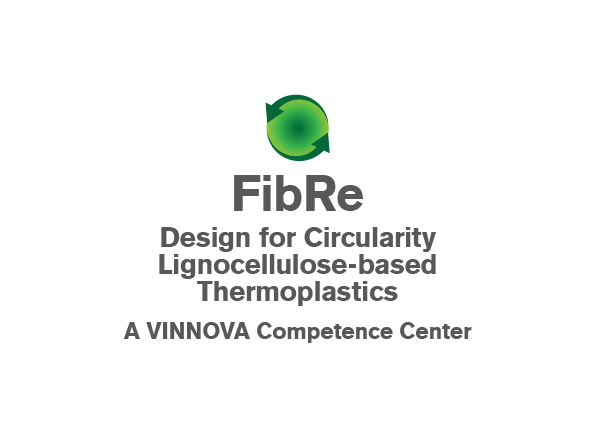The kinetics of lignin extraction in oxygen delignification.
The current and future environmental challenges call for improved and more sustainable processes in the pulp industry. To contribute to a sustainable and competitive Swedish bioeconomy the pulp industry needs to increase efficiency without increasing the use of hazardous chemicals. Oxygen delignification is a unit process that has been used in pulp mill fiberlines between […]
Functional lignin nanomaterials
This is a umbrella theme of research carried out in Sustainable Materials Chemistry (SUSMATCHEM) research group in Stockholm University. We aim to make most out of lignin with minimal processing and chemical modification according to the principles of green chemistry. In addition to fundamental studies of structure and properties of lignin and lignin nanoparticles, we […]
Upscaling of natural plastic alternatives: towards a sustainable industry
The extensive use of fossil-based plastic around the world is accelerating climate change. The global life cycle GHG emissions of fossil-based plastics were 1.7 Gt of CO2 equivalent in 2015 and would reach 6.5 Gt CO2 equivalent by 2050 if the current plastic demand trend were to continue. However, legislations and consumers are pushing the […]
Multi scale modeling of the delignification kinetics during kraft cooking
The kraft process is today the dominant industrial technology for the production of pulp from wood.In this process, wood chips are boiled with chemicals in order to dissolve lignin, hemicellulose andextractives. The process itself contains several complex mass transport mechanisms, where thechemicals are to be transported into the wood chip and then further into the […]
Plasticization and partial depolymerization of lignocellulose-based materials

This project is a part of the competence center FibRe. This particular PhD student project aims to plasticize the lignin in the cell walls. The first part will be to extract lignin from wood and wheat straw, and to evaluate how different plasticizers affect the material properties. This will then be extrapolated to lignocellulose-based fibers.
Hållbara isoleringsmaterial för efterisolering av byggnader
Projektets huvudsakliga syfte är att utveckla teknik som kan bidra till att förbättra energieffektiviteten i de stora hyreshus som byggdes på 1960- och 1970-talet och bidra till att uppnå detta på ett hållbart sätt. Ambitionen är att utveckla ett isoleringsmaterial som är 100% biobaserat och återvinningsbart via kartongåtervinningen och därmed bidra till omställningen till en […]
Assessment of the homogeneity of chemical modifications aimed for thermoplasticisation of cellulosic fibres
The strong driving force behind the sustainable biomaterial-based society is to replace the fossil fuel-based materials with renewable resources to for example address the climate change. Thermoplastic polymer products are used on a daily bases in every household and they need to possess the properties such as being ductile and formable. However, cellulosic materials do […]
Study of the multiscale networks of hemicellulose hydrogels by scattering techniques
The aim of the project is to develop multifunctional soft materials (hydrogels) from hemicelluloses for biomedical and food applications. We combine chemo-enzymatic methods to modify the molecular structure of the hemicelluloses and to tailor their assembly and rheological properties. In this project we want to understand the assembly mechanisms that drive the gel formation upon […]
Design for Circularity: Lignocellulosic based Thermoplastics – FibRe

Global warming is one of the largest threats ever to our planet which can completely alter our living conditions. Human contributions to emissions of green-house gases must decrease, and a drastically decreased use of fossil resources is a key step to achieve this. Daunting 320 million tons of plastics are annually produced in the world, […]
Modifiering av Kraft lignin for Material Syntes
Sverige har som målsättning att bli en totalt biobaserad ekonomi från år 2050. Skogsindustrin, som är en nyckelaktör för ekonomisk utveckling i Sverige, kan här spela en central roll. Vid produktion av kemisk massa frigörs en polyfenolisk förening som kallas lignin. Den globala årliga produktionen av lignin från den dominerande processen för att producera massa […]
Towards zero defects in packaging materials
Modern produktutveckling är till allt större del virtuell vilket innebär att datormodeller används för att förutspå en förpacknings beteende innan den existerar fysiskt. Fördelen med att använda datormodeller är att produktutvecklarna kan pröva nya ideer och koncept virtuellt utan att tillverka dyra fysiska verktyg samt att ledtiden från ide till produkt kan kortas avsevärt. Vidare […]
Textilier från träd: Processoptimering genom röntgenspridningsanalys.
Den globala efterfrågan på textilfibrer ökar kraftigt, samtidigt som världens bomullsproduktion har stagnerat bland annat p.g.a. konkurrens om den odlingsbara arealen. Bomullsproduktion medför dessutom en stor belastning på miljön, och det finns starka incitament att ersätta både bomull, och den oljebaserade polyesterfibern, med ett mera miljövänligt och långsiktigt hållbart alternativ såsom cellulosa från trä. Idén […]

